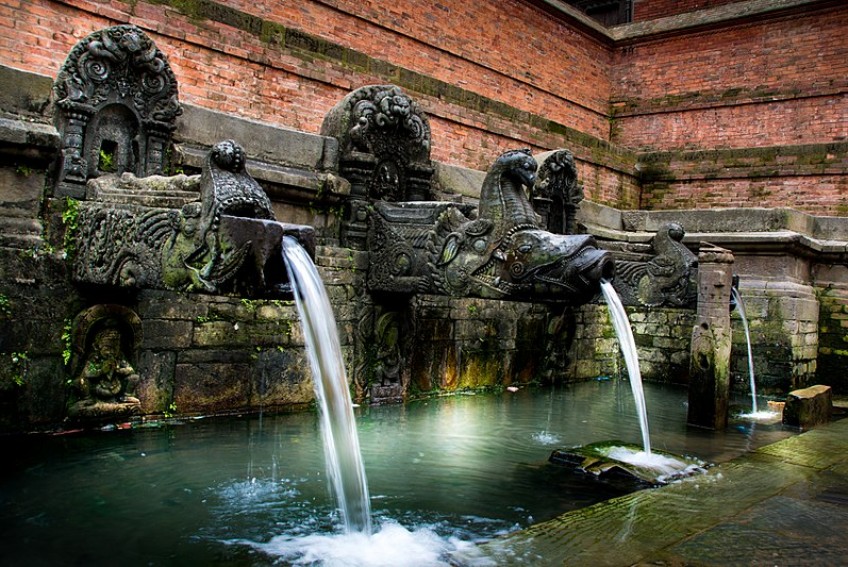Kathmandu Valley, a UNESCO World Heritage Site, is a treasure trove of history, culture, and architectural marvels. Among the most unique and historically significant features of this valley are the Hitis, traditional stone water spouts that have served as lifelines for local communities for centuries. These iconic structures not only showcase the ingenuity of ancient Nepali engineering but also reflect the cultural and religious values that have shaped Nepal’s rich heritage. In this blog, we’ll explore how Hitis were made, their significance, and their importance in both historical and modern times, along with how visitors can experience them through Female Guide Holiday, a company dedicated to showcasing Nepal’s heritage and culture.
How Hitis Were Made: Crafting Water Spouts with Skill and Tradition
The construction of Hitis is a testament to the exceptional craftsmanship of Nepali stonemasons who, centuries ago, created these architectural wonders to provide fresh drinking water to the people of Kathmandu Valley. Traditionally, Hitis were made from stone—reflecting the timeless building materials and architectural styles prevalent in the Kathmandu Valley. The stone spouts are often carved with intricate designs, including depictions of sacred animals like cows, lions, or even human faces, making each Hiti a work of art.
The typical Hiti structure consists of a raised platform with one or more water spouts, from which fresh, clean water flows. These spouts were strategically placed to channel water from underground sources, such as natural springs, rivers, or wells. The water travels through a sophisticated network of stone-lined pipes that carry it to the Hiti, ensuring a sustainable water supply for local communities. At the base of these spouts, there is usually a basin or trough for collecting the water, where people can easily fetch water for drinking or daily use.
The design and construction of Hitis were often supported by local kings, religious institutions, or wealthy merchants. Skilled artisans would not only focus on functionality but also pay great attention to the aesthetic and cultural aspects of each structure. As a result, many Hitis are adorned with elaborate carvings and religious symbols that hold deep significance in Nepal’s Hindu and Buddhist traditions.
Significance of Hitis: Water, Religion, and Community
Hitis served far more than just a functional role as sources of water; they have also been important cultural and religious symbols in Kathmandu Valley. Water holds sacred significance in Hinduism and Buddhism, two religions that dominate Nepal’s spiritual landscape. Many Hitis are linked to temples and shrines, with water considered purifying in rituals and ceremonies. People often offer prayers or perform water-based ceremonies at the spouts, seeking blessings and purification.
In addition to their religious value, Hitis also acted as vital public water sources. In ancient times, when modern plumbing systems did not exist, these traditional fountains were crucial for the daily life of the people in Kathmandu, Lalitpur (Patan), and Bhaktapur. Strategically placed throughout the cities, Hitis provided clean, fresh water, ensuring the health and well-being of the communities they served. These water spouts were also central to the social fabric of local neighborhoods. Fetching water from the Hiti was often a communal activity, with people gathering to interact, socialize, and share news.
Today, there are more than 100 Hitis scattered across Kathmandu Valley. While only a few still serve as functional drinking water sources, these historic spouts remain significant cultural landmarks. Visitors can explore these ancient water systems and learn about their role in Nepal’s rich history and water management practices.
The Importance of Hitis in Modern Times
In today’s world, Hitis hold a unique place. While modern infrastructure has replaced many traditional water systems, some Hitis continue to serve as functional, eco-friendly sources of water. These spouts, designed centuries ago, are linked to an advanced network of underground aqueducts that bring fresh water to the surface, demonstrating the engineering prowess of ancient Nepali builders.
Moreover, as the global conversation about sustainable water management grows, Hitis serve as a perfect example of how traditional knowledge can inform contemporary solutions. By restoring and maintaining these ancient water systems, Kathmandu Valley continues to benefit from an eco-friendly, sustainable water source that also highlights the importance of preserving cultural heritage.
For those interested in learning more about these fascinating structures, Female Guide Holiday offers personalized tours of the Kathmandu Valley, providing in-depth insights into the history, significance, and preservation efforts of Hitis. These tours are designed to help visitors connect with Nepal’s rich cultural heritage, while also exploring the sustainable water systems that continue to serve local communities.
How Hitis Contribute to Tourism and Eco-Tourism in Nepal
Kathmandu Valley is known for its temples, palaces, and other historic landmarks, but Hitis offer something unique for travelers seeking to immerse themselves in the daily life and traditions of the region. These ancient water spouts attract tourists who are interested in Nepal’s unique architecture, engineering marvels, and cultural practices. Visiting a Hiti is a way to experience not just the history of Nepal but also the ongoing preservation of these ancient systems.
For those exploring Nepal’s sustainable tourism practices, Hitis stand as a powerful example of eco-tourism in action. Some hitis have been restored and continue to function as clean water sources, providing an environmentally friendly alternative to modern water systems. Female Guide Holiday offers eco-tourism packages that focus on the preservation of traditional heritage sites like Hitis, giving tourists a chance to contribute to the conservation efforts that keep these important structures alive for future generations.
Conclusion: A Living Legacy in Kathmandu Valley
The Hitis of Kathmandu Valley are not just ancient water spouts; they are a living legacy that connects the past to the present. From their construction by skilled stonemasons to their role in sustaining local communities and spiritual practices, Hitis are an enduring symbol of Nepal’s rich cultural and engineering history. Today, these historical landmarks continue to serve as a sustainable water source and attract tourists from around the world, making them an essential part of Nepal’s tourism landscape. Whether you are a history enthusiast, a cultural traveler, or someone interested in sustainable tourism, visiting the Hitis of Kathmandu Valley is an experience you won’t want to miss.
For an in-depth and personalized tour of the Kathmandu Valley, Female Guide Holiday offers expert-guided tours that include visits to these fascinating water spouts, providing a deeper understanding of the region’s heritage and the role these structures continue to play in Nepal’s sustainable water practices.
Hitis in Kathmandu Valley: Explore Traditional Stone Water Spouts and Their Cultural Significance
Hitis in Kathmandu Valley are traditional stone water spouts that serve as both vital historical landmarks and sustainable water sources. These intricately carved fountains are part of Nepal’s rich architectural and cultural heritage, showcasing the engineering genius of ancient Nepali builders. Visit Kathmandu, Lalitpur (Patan), and Bhaktapur to explore over 100 Hitis, which continue to play a role in local life and religious practices. As the world embraces eco-friendly water management solutions, Hitis provide valuable insights into traditional systems that are still in use today. Learn more about these iconic structures and the importance of preserving Nepal’s cultural heritage with Female Guide Holiday, your expert guide to Kathmandu Valley’s historical treasures.



